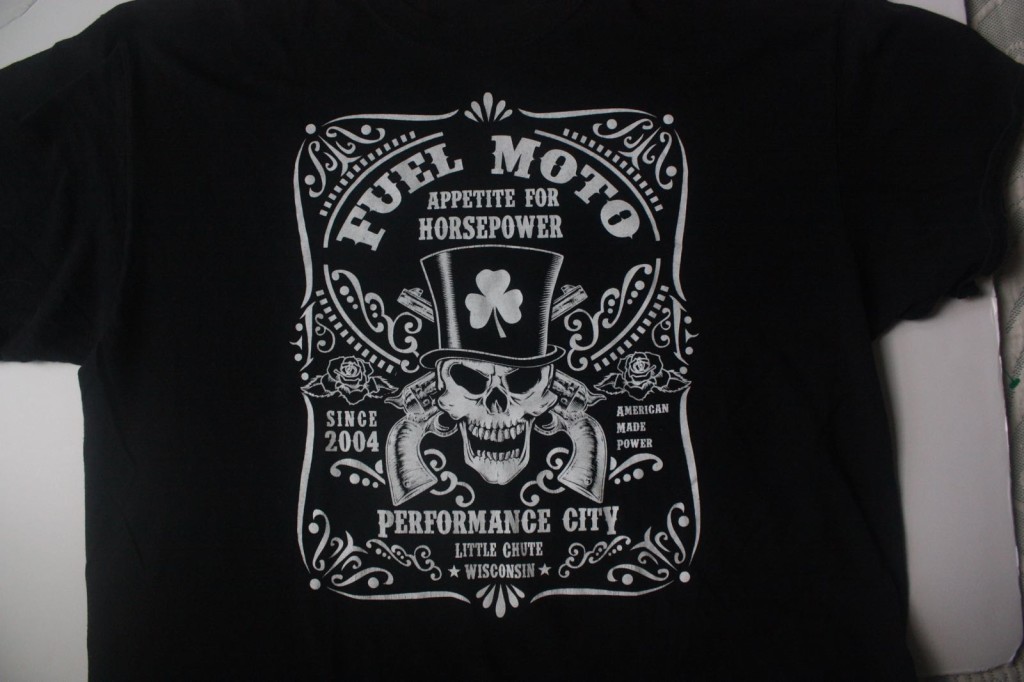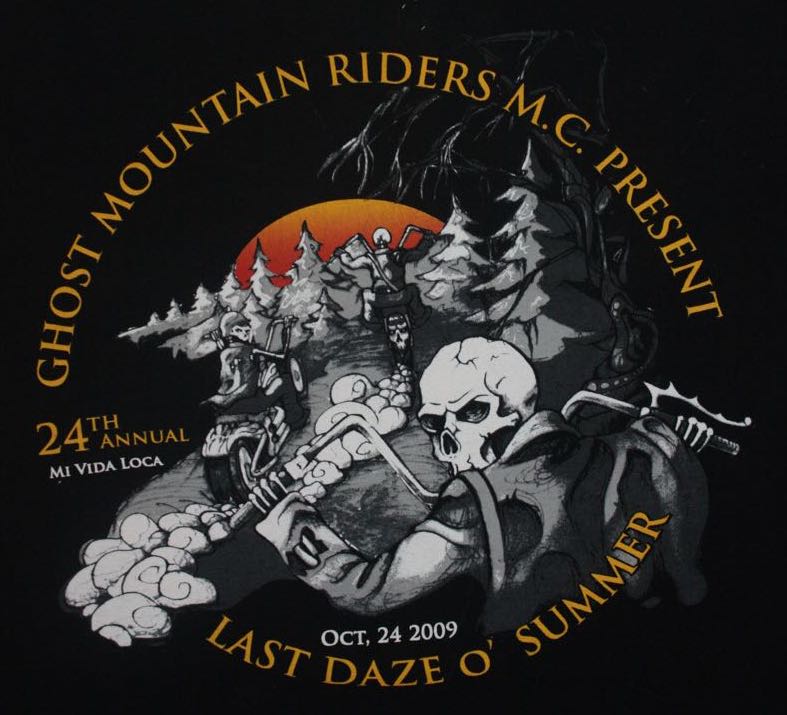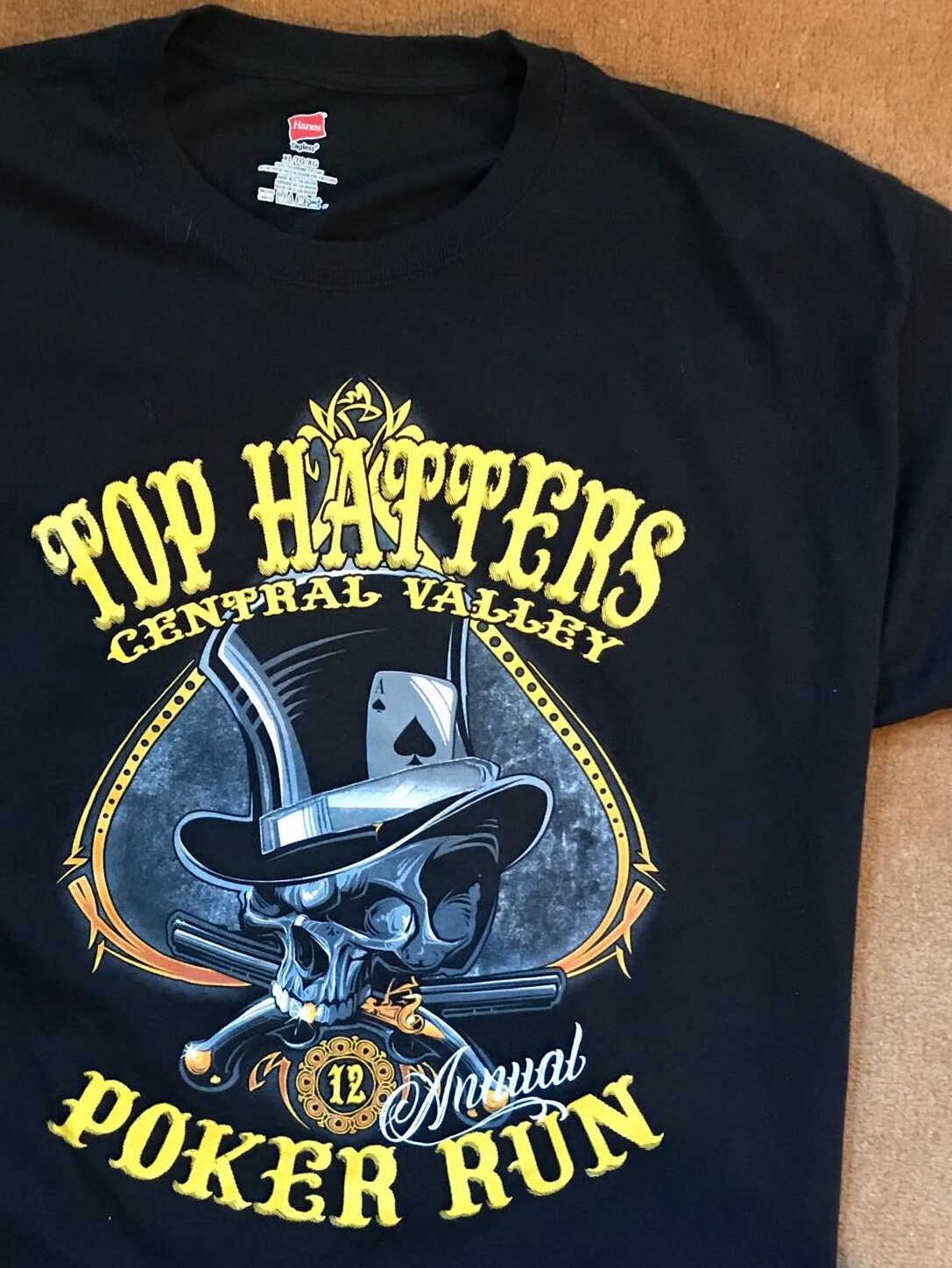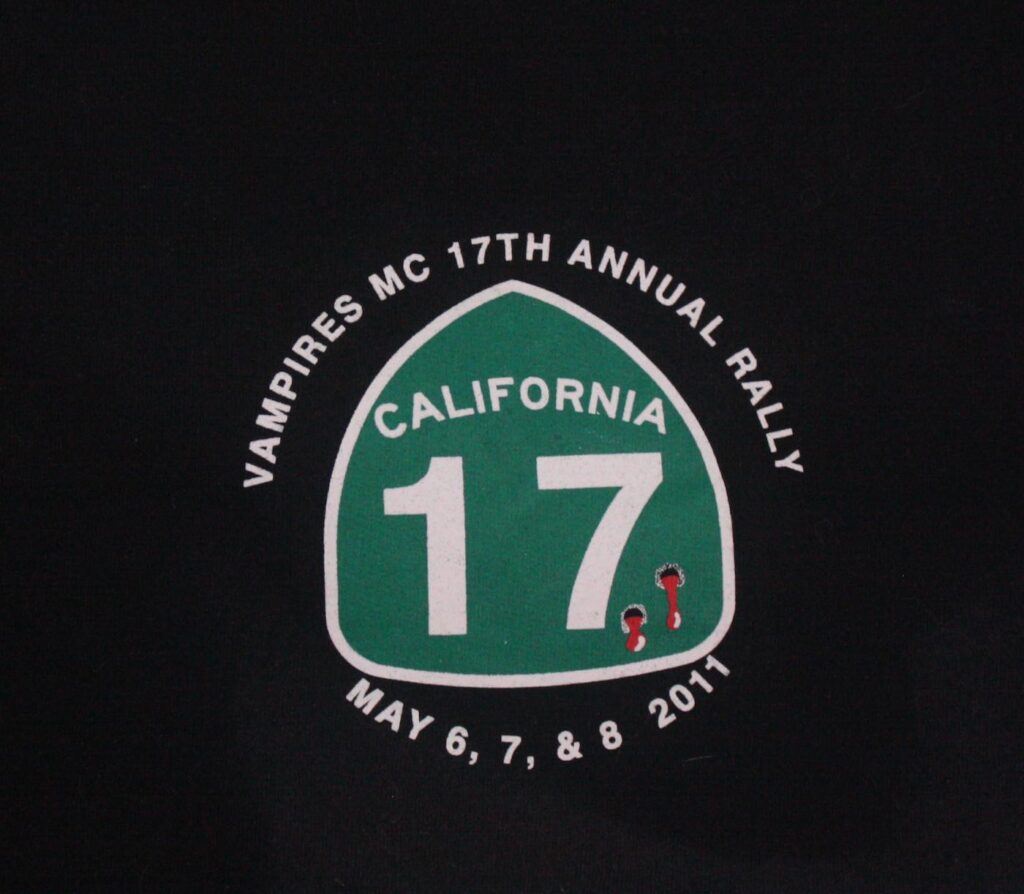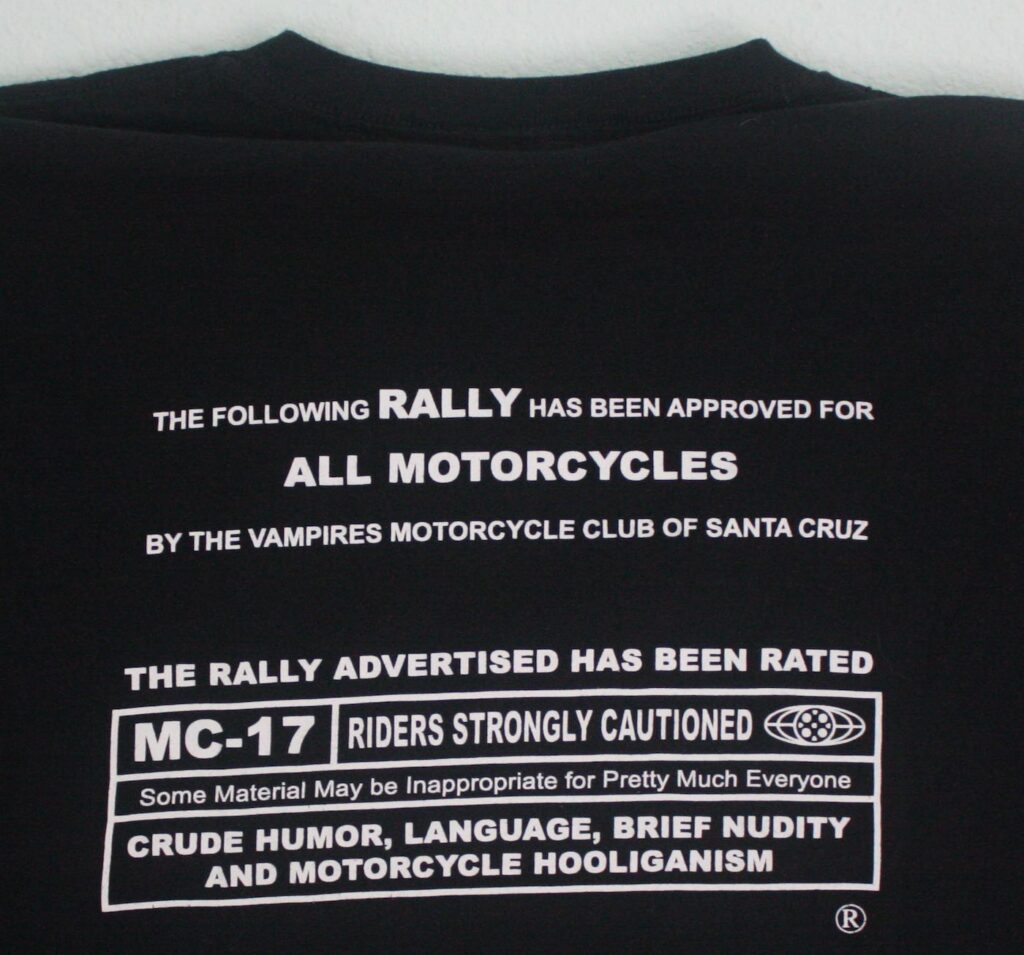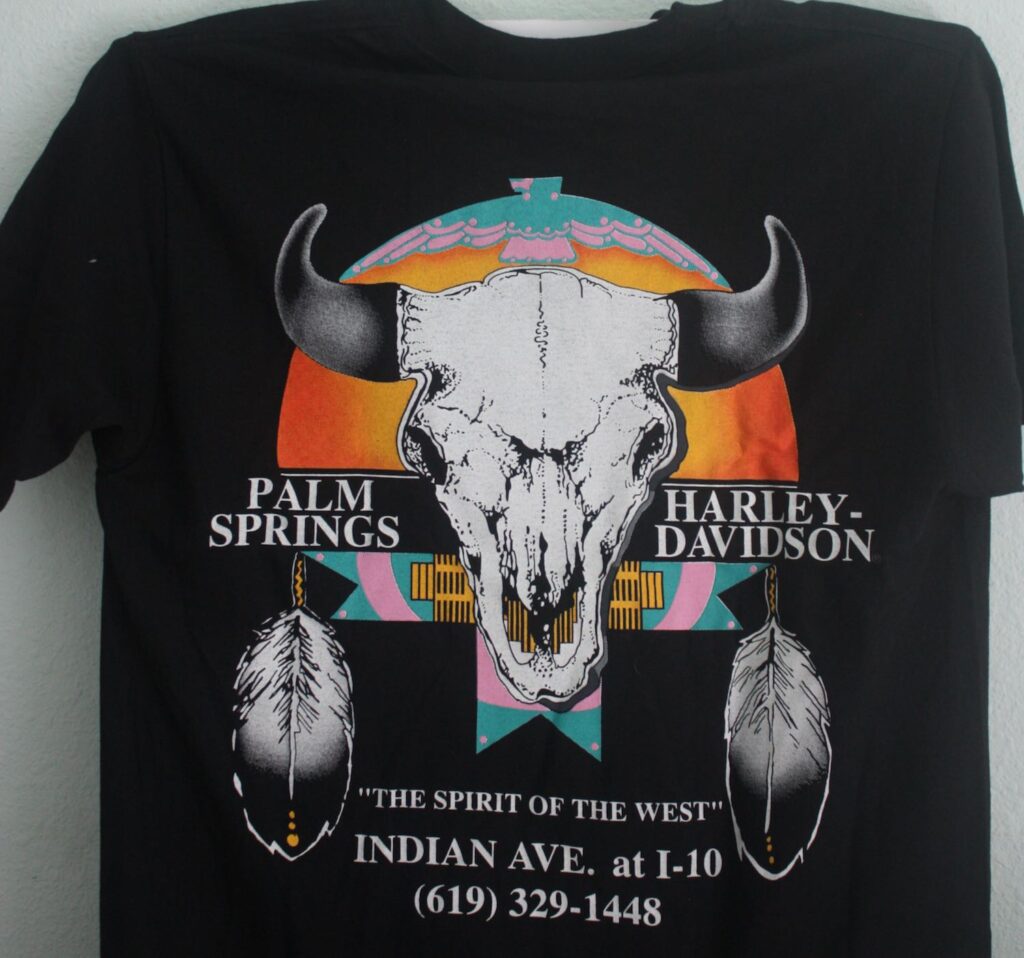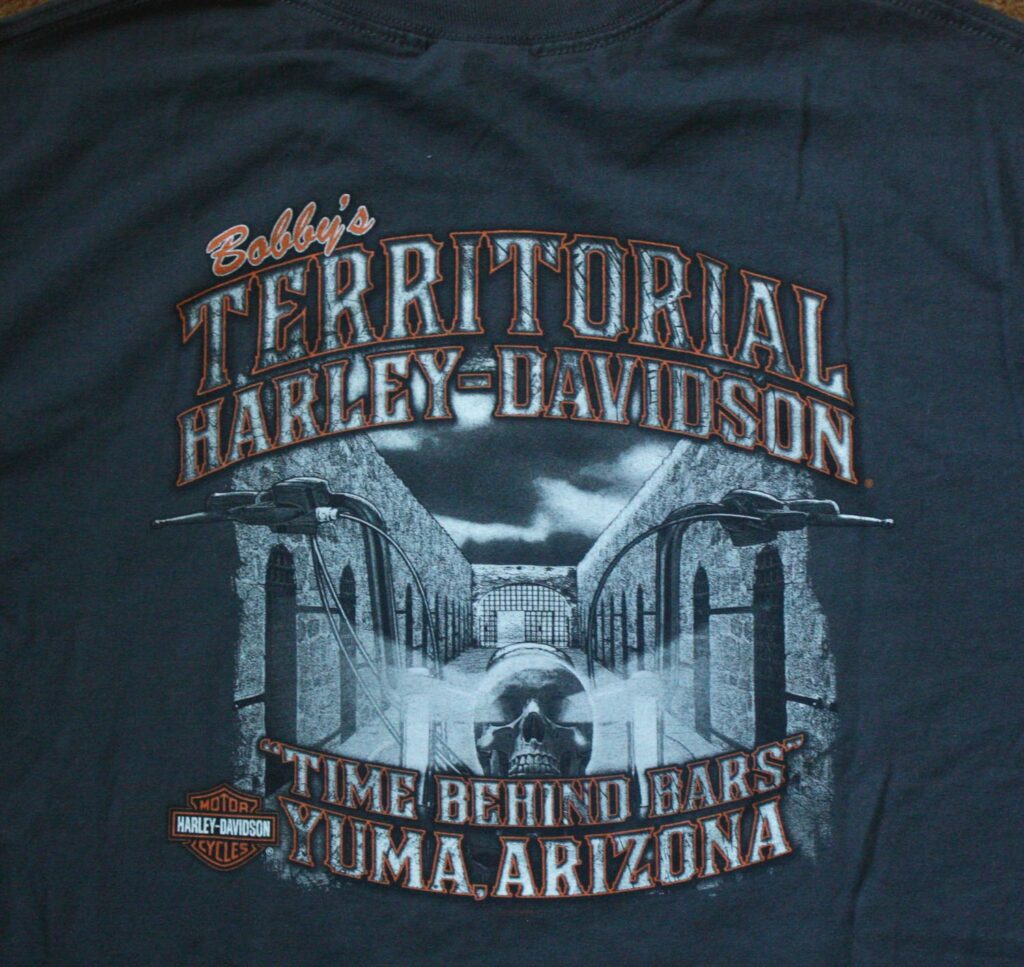(Note: before we proceed, note that the motorcycle club t-shirts shown below are mainly t-shirts from local motofcycle clubs that I’ve found at random at thrift stores. Although I’ll talk about the characteristics of certain types of motorcycle clubs, I don’t intend to classify any one of these clubs as one type or another.)
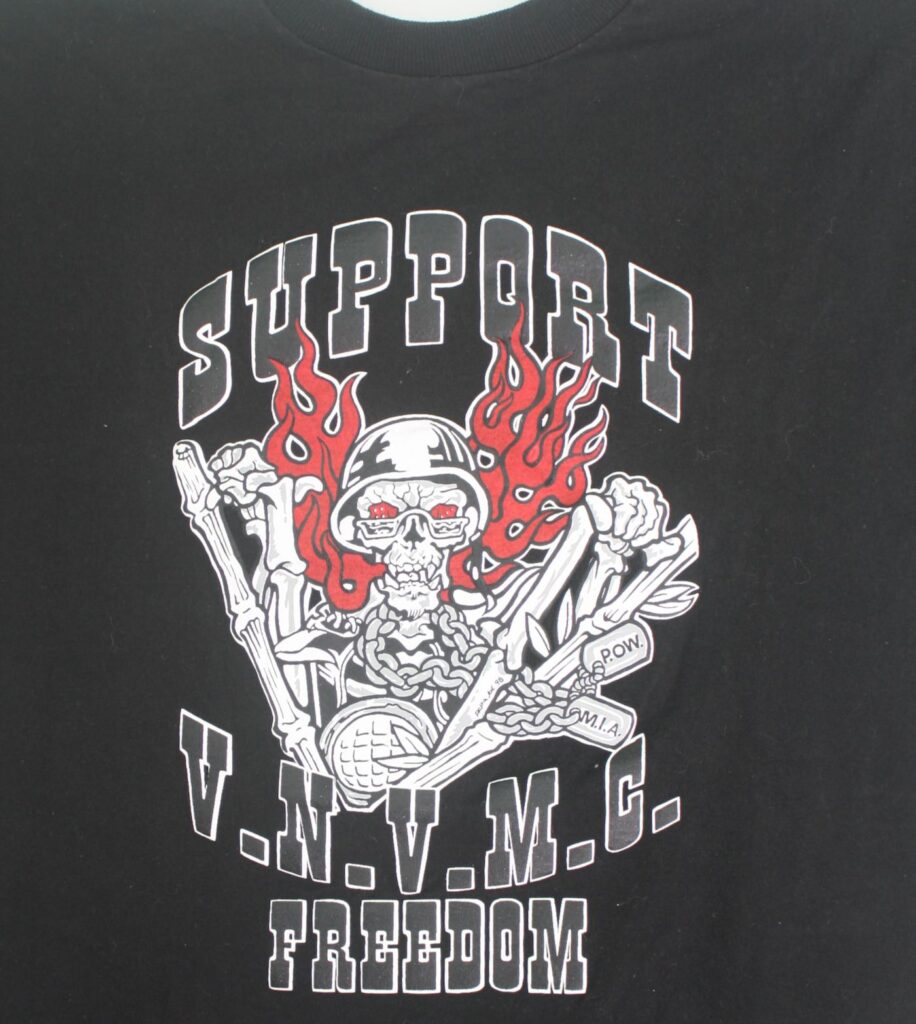
Whether they are called motorcycle clubs, motorcycle gangs, “one-percenters” (the one percent of bicycle clubs that give all the others a bad name), or riding clubs, many motorcycle clubs like to project a tough image.
And that often means skulls: on club t-shirts, on patches, or on the members’ “colors” (leather vests or jackets with club insignia that some clubs’ members wear).
Skulls have symbolized toughness for a long time. In World War II, servicemen often got a tattoo before they shipped out for… wherever. It could be a heart for your girlfriend, to “keep her with you.” But it could also be a skull other dire image to show the kind of warrior you wanted to be in battle. Take a look at a flash sheet (a sort of catalog of tattoos) from Lou Normand, a noted tattoo artist in the WWII era.
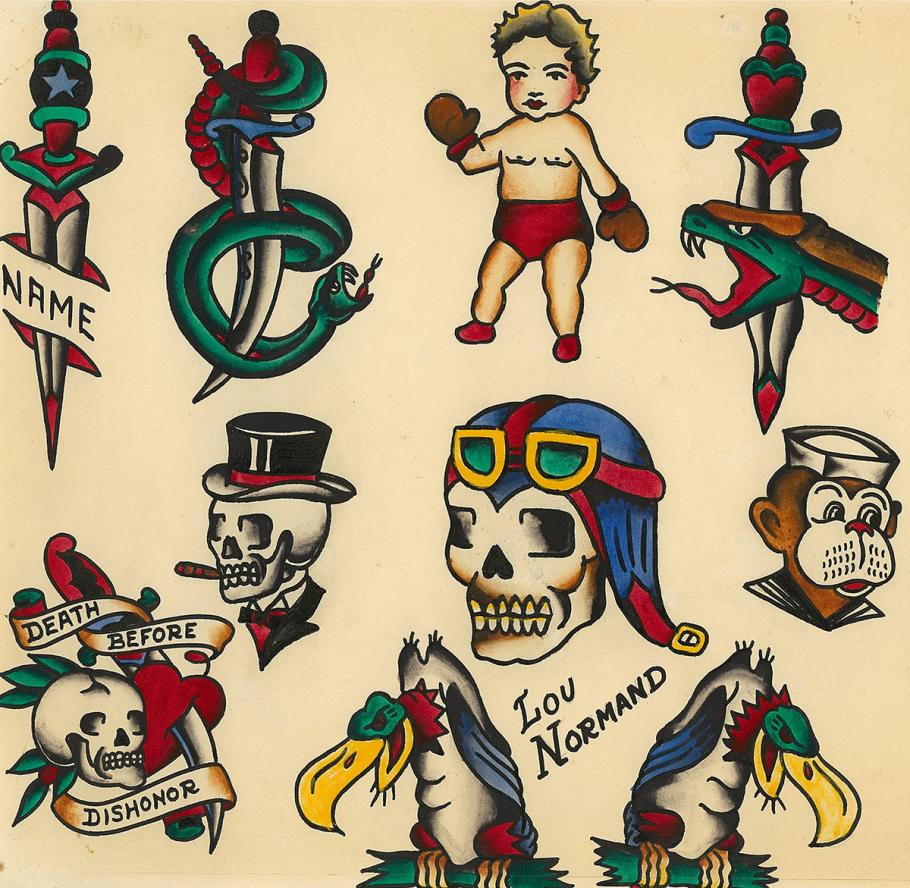
Tattoos had retreated to the underground in those days. They would rise above-ground with the soldiers and sailors, and skulls would rise with them.
After the war, veterans seeking some kind of home in a world that didn’t fit them anymore started banding together to ride motorcycles in the ‘40s. Harleys, mainly. For the adventure they’d gotten used to in the military; for escape from a “normal” world that didn’t fit them like it used to; and for some kind of brotherhood as between their old comradse-in-arms. The vets brought the skulls — on their bodies, on their bikes, and in their minds.
Discontented young men who don’t feel at home in the “real world” anymore? Sometimes they bring the trouble, sometimes they don’t. But if you had taken a bruising from the war and best fit in with people who would understand, the motorcycle clubs could be the place for you.
Because they brought you structure, and a family. “Traditional” motorcycle clubs had (and have) extensive rules, regulations, regular meetings, strong internal discipline, and a prolonged initiation process. Once you’re in, you’re brothers (or in the modern day, occasionally sisters or some other gender).
That said, most motorcycle clubs (some are referred to as “riding clubs”) are just clubs, while others are tightly run, “traditional.” But there can be many degrees of “traditional.”
Some clubs find ways to serve their community, organize group rides for fundraising, and so on. (Clarification: I’m speaking largely of clubs that do not affiliate with the American Motorcycle Association — which seems to be most of them.)
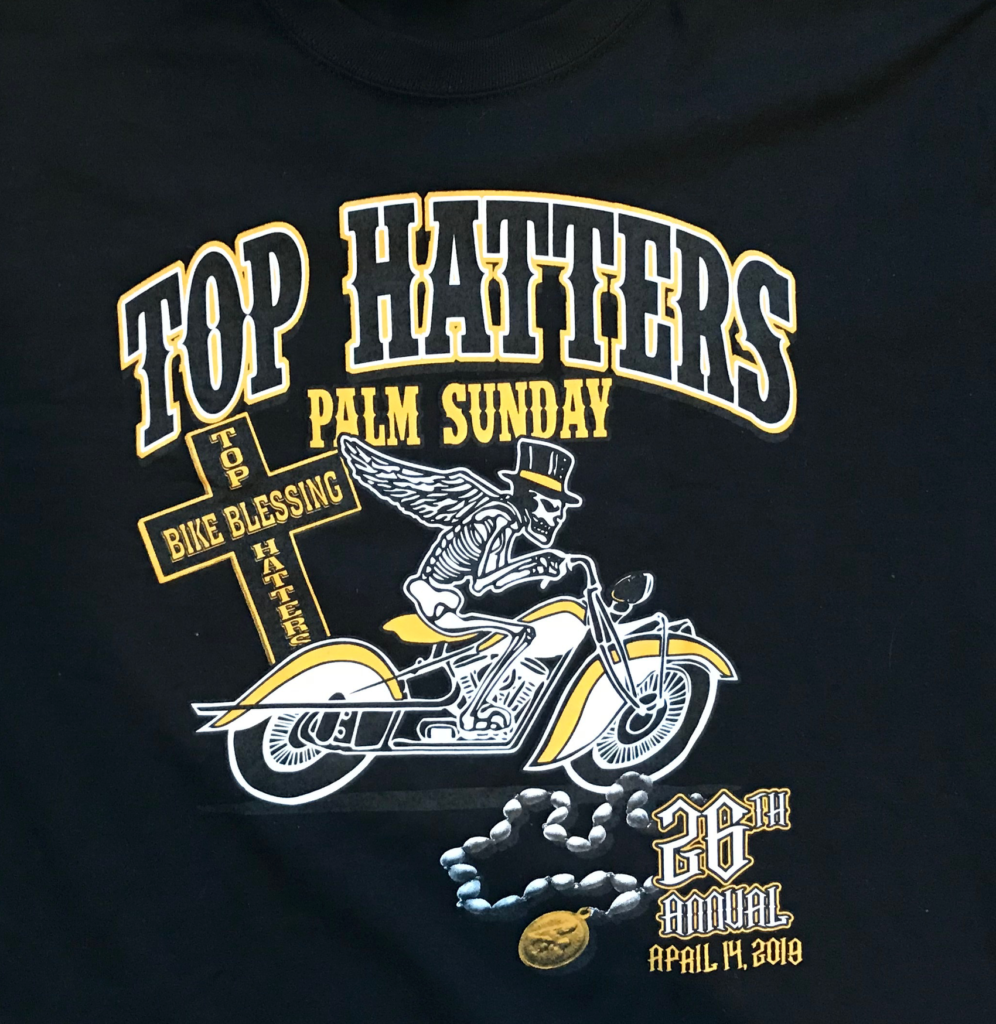
A few outlaw clubs pursue or have pursued organized criminal activities. You’ve heard of them, some over many decades. I don’t believe that I have any t-shirts from clubs like that.
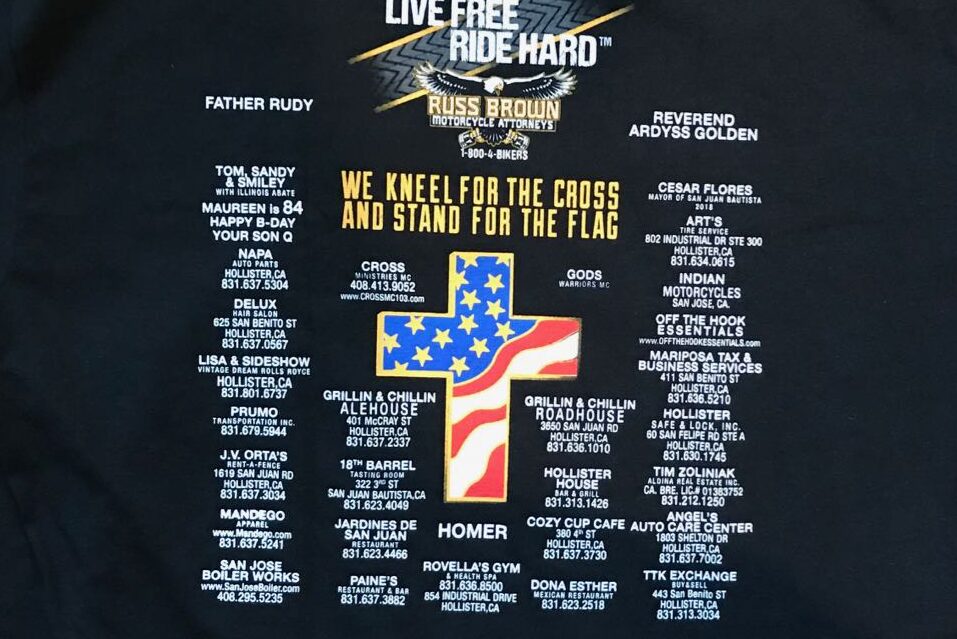
And there are a few clubs whose members may be hardworking and honest, but just don’t like other people to tell them what to do. They don’t believe in involving the law to settle wrongs amongst themselves or with other clubs. Some call them one-percenters, some don’t. We’ll leave it there.
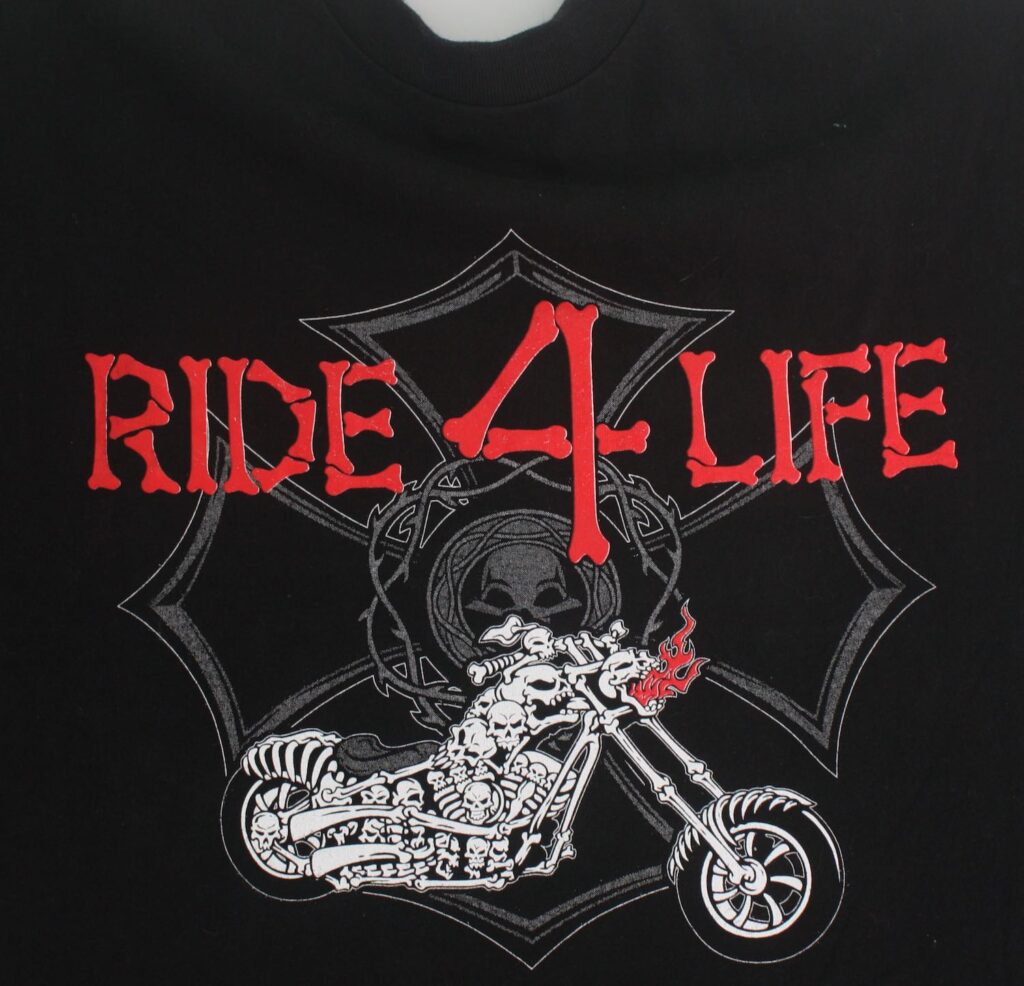
In the 60s, American media romanticized and idealized outlaw biker life: outlaw bikers were seen as misunderstood rebels standing for the freedom that they believed in. Discontented ‘60s teens felt misunderstood, too. Outlaw gangs were one template for rebellion, and skulls were part of that template. Outlaw motorcycle clubs midwifed America’s love affair with skulls, in my opinion.
Harley Davidson motorcycles were integral to the story. In America’s mind, the gangs and clubs all rode Harleys, all the time. That’s not really true, though some clubs required it. But a big Harley cruiser could make any middle-aged businessman feel like a rebel on the open road for awhile. And that’s why some Harley dealers sell t-shirts that are perfectly pleasant and respectable…..
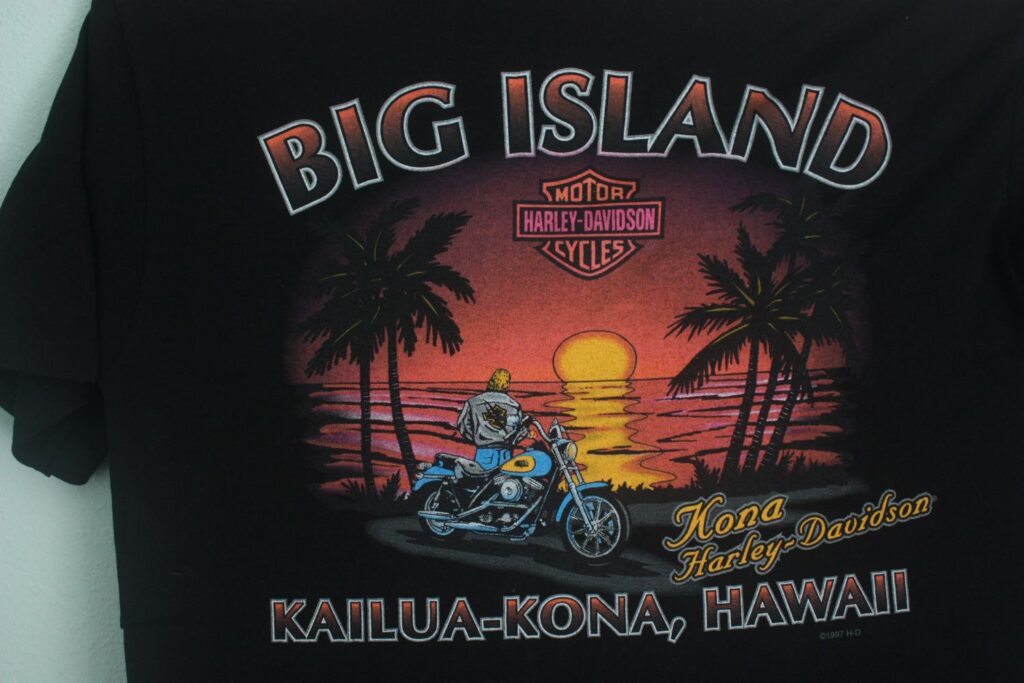
…but others bring the skulls.
And why even purveyors of aftermarket upgrades and tuning meters for your bike’s electronics push a bad-ass t-shirt.
